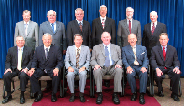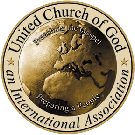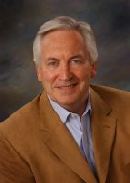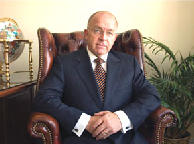



Worldwide Church of God
Family Tree
The breakup and scattering of what was once the monolithic Worldwide Church of God. which began in earnest in the 1970s, and picked up speed in the 1980s, continued unabated in the 1990s. It kept going through the first decade of the new century/new millennium, and has continued right up to a major split in one of the major splinter groups in the year 2011.
A “Church of God Timeline” on the website of The Journal–News of the Churches of God chronicles the critical events in 1994 and 1995 in the history of the WCG:
1994
In December, Pastor General Joe Tkach Sr. gives a message in Atlanta, Georgia that would prove to be the catalyst for the largest single exodus of church members and ministers from the WCG. In his sermon to members, Tkach states that Christians do not have to keep the old covenant laws like weekly and annual Sabbaths, they don't have to save second or third tithe, and they don't have to avoid unclean meats like pork and shrimp. Such significant changes in doctrine would eventually lead to the formation of the United Church of God in early 1995.
1995
Joseph Tkach, Sr., the Pastor General and head of the WCG, dies of cancer complications on Saturday, September 23, 1995 at the age of 68. Before his death he appoints his son, Joseph Tkach, Jr., to the position of Pastor General. Joe Jr. is 43 years old when he takes over the reigns of the WCG.
After Joe Tkach's Atlanta message in Dec. 1994, members and ministers start to leave the WCG. The exodus begins to pick up momentum early in 1995 as church members begin to hold services outside the WCG, with some fellowships incorporating. A series of meetings by former WCG ministers is held April 30 to May 2 in Indianapolis, Indiana. The meetings produce the formation of the United Church of God, IA (UCG, IA). David Hulme is selected as temporary chairman of the board until the elders meet again in December to ratify the new group's bylaws and move to a permanent church structure. In the December meeting, Bob Dick is elected Chairman of the board and David Hulme is elected as president.
UCG, IA announces late in the year that the total attendance for its first Feast
of Tabernacles is 17,458. In March, 1996 the group lists 212 U.S. congregations,
115 employed ministers and 4 part-
United Church of God: UCG 1995 Council of Elders
 The new “United Church of God, an International Association” used the acronym UCGAIA
for the first year of so of its existence. But when some exWCG wags on the Internet
began joking about the group naming itself after the pagan Earth Mother Goddess–the
United Church of GAIA–they abruptly dropped the “a” for “an” out of the acronym.
They’ve been officially the UCG,IA ever since in their own writings. Outsiders,
however, usually refer to the organization as simply the UCG.
The new “United Church of God, an International Association” used the acronym UCGAIA
for the first year of so of its existence. But when some exWCG wags on the Internet
began joking about the group naming itself after the pagan Earth Mother Goddess–the
United Church of GAIA–they abruptly dropped the “a” for “an” out of the acronym.
They’ve been officially the UCG,IA ever since in their own writings. Outsiders,
however, usually refer to the organization as simply the UCG.
 The Web wags also later noted how utterly odd it was for a church group to eventually
choose to represent their organization with an iconic logo of the Earth (shown here)
that was all dull shades of brown and looked like a lumpy, drying mud-
The Web wags also later noted how utterly odd it was for a church group to eventually
choose to represent their organization with an iconic logo of the Earth (shown here)
that was all dull shades of brown and looked like a lumpy, drying mud-
The UCG’s first major organizational meeting in Indianapolis in 2005 was a “high”
for most of the people involved. Many of the exWCG ministers involved had been troubled
for a long time at the doctrinal changes that were sweeping the WCG, but had not
been brave enough to just “take a stand” on their own and become refuseniks. Most
relied on the WCG for their paycheck, and since it was a non-
Thus taking a stand against the “apostasy” individually would have had far-
As noted above, over 15,000 members left the parent organization in 1995 to cast their lot in with the new organization. And that meant a comfortable “tithe base” from which to carve a system of ministerial salaries–and a retirement fund!–in addition to paying expenses for meeting halls for all these people. It would even leave enough for the beginnings of a media outreach of a magazine, booklets, and eventually broadcast evangelism.
Reports coming back to the rank and file members of what went on at the Indianapolis
meeting were very encouraging. Many had hoped for a new style of church organization
after experiencing the worst of what one-
The reports of the Indianapolis meetings indicated that the ministers in attendance
agreed to a system of organization that was much more like a “confederation of semi-
The central HQ would organize annual conventions, provide teaching and evangelistic
materials, maintain the doctrinal integrity of the organization, coordinate evangelistic
outreach efforts, provide spiritual and practical advice as needed. Some local groups
were already excited at the prospect of establishing a local fund toward building
their own locally-
Leadership of all of this would be by committee–a Council of Elders–which would be
chosen at annual meetings of all of the ministers in the organization. No one man
would have the pre-
It all sounded so great!
Within less than a year, it became very obvious that a significant proportion of
the ministers who had agreed to all this … didn’t really agree with all this. Maneuvering
by some began almost immediately to carve out power positions, and to limit the autonomy
of local groups. Many of the carefully laid plans were laid aside. The organization
began to look like a clone of the old WCG with just a many-
Within months the first defections from the organization began. Over the next few years, individual ministers became disgusted and left on their own. Local congregations found themselves at odds with changing policies being established by the HQ, and after months of sparring with the central leadership, they either left or were shoved out of the organization.
In 1998, much of the UCG congregation in Big Sandy, Texas, along with their minister, left the organization. It was at the time one of the largest, possibly the largest, congregation in the whole UCG. During the contentious period leading up to the split, when the congregation was attempting to get the HQ leadership of the UCG to answer their concerns, an open meeting was held in Big Sandy with some of those leaders and many in the congregation. A transcript of the discussion sessions from that meeting is still on the Internet on the website of The Journal–News of the Churches of God. Here’s a short excerpt of some comments by one woman at that meeting, which she addressed to the leaders. It gives a glimpse of the tumultuous history of the organization between 1995 and 1998.
In 1996 there were 18,000 people [n the UCG,IA], according to New Beginnings [church newsletter] In December 1997, 13,109, a loss of 4,891 sheep, 27 percent, or 2.7 sheep for every 99 that you should leave in the fold to go get the missing sheep. We haven't seen you doing that.
You started with Birmingham. When ministerial services interacted with Birmingham, there was a split.
Next Nashville, Austin. Now six people are left in Austin, and they don't even meet there. They hardly have church at all.
New Jersey and New York: no United Church of God congregation left. You took the pastor, then allowed that congregation to shrivel up to nothing, then moved him to El Paso, now you don't have one in El Paso, either.
We're all supposed to look at fruit. You're supposed to look at fruit, and we're supposed to look at your fruit and our minister's fruit. Our minister has good fruit. Your track record is not really good, as far as fruit.
Dallas South couldn't support the minister; they were too small. So you gave him Waco. Mark Gully offered to pastor Waco for free because he knew Waco would split if you sent Dallas South's pastor there.
Now there's 12 meeting in Waco out of 40.
Houston East has shrunk down to about 40. I can't find exact numbers because everybody that I know that went there doesn't go there anymore.
Houston Southwest has shrunk down to about 40. Again, I don't know anybody that goes there anymore. And I used to live there. Their local board was closed; their money was sent to Arcadia. [The HQ of the UCG was in Arcadia, California, at the time.]
Toledo split. Their statement, when they split: They requested that the council uphold the constitution and bylaws of the church, and the council refused. That's their statement.
Detroit split.
Miami split.
West Palm Beach split.
Hartford, Conn., split. The reason Hartford, Conn., split is because members attended Feast sites this past Feast in other organizations with their family members who are in those other organizations. And when they came back from the Feast they weren't allowed to serve. The piano player wasn't allowed to play piano because she'd gone to another Feast site. And you all backed the pastor that said that, and then they split.
South Dakota's had a split.
Minneapolis has had a split.
Kansas City has had a split.
Victoria, British Columbia, left.
San Antonio has had a split. They now have Church of God South Texas down there.
The Big Sandy group was no longer a part of the UCG shortly after this meeting. Unfortunately, the situation there did not end the endless litany. It continued year after year, clear up to 2011.
But that is getting ahead of the story.
To outside observers with a WCG background, it became very obvious by the circumstances that the UCG was not, and had never been, internally United at all. There were, from the very beginning, two rival factions. But in the earliest days of the planning sessions that led to the formation of the organization, neither of them were totally open with their own agenda.
So they ended up with a top leadership of the organization made up of a mixture of both of these factions. The make up of the leadership was shifted on a fairly regular basis by the selection process of the ministry as a whole. So a Council that was primarily “reactionary” would be in the ascendance in one period, and a relatively “progressive” one would be in the ascendance in another period.
As it became more obvious to those involved just how different their perspectives were on “how to run the church,” they found themselves forced to not allow this information to be commonly known among the rank and file of the church members. For they had made a strong case that their organization had been “ordained” by God Himself to carry on the work of the WCG as it had been under Herbert Armstrong. As they often put it, “Jesus Christ is the Head of the Church,” and He was directly leading the leaders in their decision making. To admit that they were bickering bitterly behind the scenes about all sorts of decisions would have belied this claim.
Right into the middle of this situation in 1998, another problem reared its head. Although individual congregations had left the UCG, as of 1998 there had been no actual “split,” with a new denomination forming. The situation changed in 1998.
The Church of God Timeline outlines the events that lead to the first major splinter off the UCG:
1998
In January the UCG, IA council of elders requests that president David Hulme either support the church's decision to move its headquarters to Cincinnatti, Ohio or resign. When Mr. Hulme refuses to do either, the council overwhelmingly votes to fire him as president. Bob Dick, chairman of the council of elders, temporarily replaces Hulme as president until March, when Les McCullough is elected president.
The official reason given for Hulme's dismissal is " . . . differences between the Council and President regarding operations of the organization." Further official elaboration is not provided, in part due to possible lawsuits. However, based on unofficial statements from elders and employees reported in The Journal's January 1998 issue, Hulme's separation comes down to conflicts over "who is in charge." Instead of governing by cooperation with the council of elders and carrying out decisions approved by the general ministry, Dave as president made many decisions as if he had total control (like HWA).
David Hulme would soon form Church of God, an International Community, which would become one of the largest churches with a history back to the WCG. In 2003, a total of approximately 2,600 members and guests attend the church's Feast of Tabernacle sites around the world.
See a brief overview of the COGAIC at the end of this section on the UCG.
The United Church of God, from it’s inception in 1995, has been significantly different
from most of the other WCG split-
The UCG was primarily formed as a reaction to the changes in doctrine in the WCG, The leadership knows that, in general, the average member joined the denomination because they wanted to be part of a group continuing the teachings of Herbert Armstrong. Therefore the core of the doctrines, practices, and policies of the UCG tend to reflect fairly closely the culture of the WCG as it was under the leadership of Armstrong.
Virtually all of the top leaders of the organization, and most of its field ministry, were trained at Ambassador College at a time when Herbert Armstrong still played a dominant role in the educational system that produced ministers. So many of them reflect his personality and tastes in everything from preaching and writing style to choice of music appropriate for worship. UCG worship gatherings tend to be formal and rooted in the past, with little or none of the contemporary casual style of dress and music found in many modern churches.
The UCG has a TV program called Beyond Today that is available on the Internet and
on one actual broadcasting outlet, “superstation” WGN TV out of Chicago, along with
some cable channels in Canada. The style of the program closely reflects the old
World Tomorrow program of the WCG. Instead of a one-
The UCG’s Good News radio program is also closely modeled after the radio version of the World Tomorrow. It is only available on the Internet. Most presentations are done by a pair of hosts, which may vary from program to program. A companion Good News magazine, closely modeled after the WCG’s The Plain Truth is available in print and online.
Just as was done in the WCG, local congregations almost all meet in rented halls such as mall community rooms and hotel conference rooms. Very early in the UCG’s history a few local congregations began local building fund drives with an eye to actually building or buying permanent facilities that would be owned by the local group. But it soon became evident that the central HQ was not going to allow this to happen. Most groups ended up turning the funds over to the central organization–if they wanted to continue in affiliation with the UCG.
Throughout the first decade of the new millennium, this and other controversial issues
continued to lead to defections of ministers and congregations from the organization.
(For a brief overview of one of these, see the profile of the COG-
At the same time, the two internal factions within the UCG’s top leadership continued
to jockey for top position. The “progressive” faction wanted to gradually make changes
which could lead to at least minimal steps toward a bit of more local autonomy, and
away from some of the more rigid policies and practices of the WCG. The “reactionary”
faction actually looked toward restoring to the organization a version of the one-
The battle between these two factions suddenly broke out into the open in 2010, to the shock and surprise of many of the rank and file members of the UCG. Earlier methods of smoothing over disagreements finally failed. And to the even greater shock of many of the members, in late 2010 a significant portion of the ministry of the UCG (some estimates put it at as high as 60%) announced that they were leaving and forming a new denomination. Many of the pastors involved had been privately grooming their own congregations for this moment for some time, and thus several thousand members (some estimates indicate 40% or more of the membership) also left to align with the new group, which soon took the name Church of God, a Worldwide Association.
As of summer 2011, the COGAWA was already experiencing its own internal dissent, as leaders jockeyed for position. Given the history of the splinters of the WCG, there is every reason to assume that it will take less than two years for it to experience its own first split.
See a brief overview of the COGAWA below, after the brief overviews of two earlier
UCG splinter group, the COGIC and the COG-
The UCG itself took a very hard hit on its income of tithes and offerings from the departure of so many members. But losing so many ministers meant it also had a much smaller payroll to meet. So its leadership regrouped and went on with its business as usual. Again, given the history of the splinters of the WCG, and the UCG’s track record itself, there is every reason to assume it will take less than two years for it to experience more internal dissension.
Church of God, an International Community: COGAIC 1998 David Hulme

David Hulme was an integral part of the leadership of the WCG under Herbert Armstrong.
At the time of Armstrong’s death, he was even considered by some to be on the short
list from which Armstrong might name his successor. Hulme had long been an “evangelist-
Hulme was at the original 1995 planning session for the United Church of God, and was soon chosen by the ministry of the new organizatoin as its first President. But by 1998 he was so disgruntled with the way things were going in the new organization that he jumped ship and formed his own group, the Church of God, an International Community (COGAIC).
In 12/2005, David Hulme explained in a church publication the reason for his defection in 1998. There is a lot of rambling in this, but the bottom line seems to be that he believed that the True Church should be led by one “divinely chosen” man … and that he should be that one man.
It is said that if you don't know where you came from, you will not know where you're going.
The Lines Drawn in '95 Easier to See Than Those of '98
At two of the summer camps this year, some campers asked why the Church of God, an International Community, began, and how. Though they were much younger at the time, many teens can explain why the break came with the Worldwide Church of God (WCG) in 1995, but they find it more difficult to explain the subsequent break with the United Church of God, an International Association (UCG) in 1998. There are, no doubt, several reasons for this difficulty.
One is that the lines drawn in 1995 were very plain to see. A whole way of life of obedience to the law in the spirit was being attacked and misrepresented. Our everyday life was being overturned; identity as a follower of Jesus and the early New Testament Church was being compromised, if not destroyed.
No longer was it necessary to keep the weekly or annual Sabbaths, or eat only clean foods. These identity markers were being taken away. Forms of worship were shifting toward an entirely different way of life. Attempts were being made to create a different identity.
Why the Parting in 1998?
But when we had to disassociate with UCG three years later, the reasons for this separation may not have been so clear for some of our children and perhaps even for some adults.
It was in some respects a more subtle decision. It required already tired veterans
to uproot themselves once more -
Some have thought that the separation was really about personalities, but because their congregation moved, they did too, without really addressing the issues. Others may have come along later from other groups and do not really know the facts.
Another reason is perhaps that, though there were articles written and sermons given, we have been encouraged to get over the past and move on. This is certainly necessary, but not at the price of not grasping the lessons...
What Was the Issue in 1998? What Caused the Second Separation in Three Years?
Although problems began to be manifested through disconcerting events, troubling
attitudes and questionable motivations, it is vital to emphasize that the issue ultimately
came down to one of doctrine -
To understand, we have to go back to the end of our relationship with the WCG and the beginning of the UCG.
As a number of ministers and members refused to accept the doctrinal changes being initiated in 1995, they began to look for a new home. I had resigned from employment with Ambassador Foundation and from my role on the Advisory Council of Elders of WCG during the Days of Unleavened Bread.
I was then asked to attend a meeting of others who had resigned from their roles in the WCG ministry. Only at the last moment did my late wife and I agree to attend the meeting in Indianapolis.
As most of you know, I returned to Pasadena after about a week or so as Chairman
of the newly formed UCG board, having been asked to manage the day-
The basis for my selection as a Council member of UCG was a ballot by the elders assembled in Indianapolis. Then following a consensus of the other council members in a separate meeting, I reluctantly accepted the role of Chairman. For various reasons, no one else was willing take the role at that time.
Godly Consensus or Democratic Process?
It was my view that no other method of selection of leadership was clear at the time, and I regarded the outcome as God's doing. We had all asked for God's will and this is what had happened.
Did I think that we were in a democratic process? No. I thought we were seeking a godly consensus as in early New Testament times (see Acts 15, where the Holy Spirit guided the decisions made). Mr Armstrong had died nine years earlier, and there was no clear idea of what to do in terms of leadership in the face of the collapse of true doctrine.
My understanding of what I was to do, which I spelled out in a document that is still
on the COG member website, was that I would effectively be the executive in charge
of the day-
During the next few months, it became clear that some were reacting against the recent
past in their thinking and decision-
More and more, a democratic model was being adopted, with layers of protections against potential doctrinal and manpower abuses. However, at the time, there seemed no other option for the formulation of the new Church organization. Together with some of the other ministers, I went along with the process; in retrospect, we should not have.
In December, a Constitution and Bylaws was ratified by 94% of the elders then meeting in Cincinnati. The council chose me as President in the first ballot, and another man became Chairman.
Sliding Into Democratic, Political Processes
Over the next two years, it became increasingly clear that the system was not working
and that no single person would be allowed to be in charge of day-
At this point, around late summer 1997, I again read some of Mr Armstrong's materials and was shocked at the clarity with which he addressed the matter of Church government, what he had...
I came to see that there were some conclusions that could not be avoided, and I wrote about this after our departure in 1998. You can find it in a paper in the members' section on the Church of God website. I said this:
I will be very plain. I believe it necessary to repent of ignoring the plain, biblical teaching on the matter of government. I believe this is a doctrinal issue rather than merely an administrative matter. It has vital spiritual ramifications affecting the overall fruitfulness of the Church. As HWA wrote, there are several components to the identity of God's Church, and one of them is "organization . . . on the biblical pattern." At the beginning of UCGIA we focused on the doctrine and practice that he mentioned, but overlooked the importance of ensuring that the organization was also carefully following the biblical pattern. We turned away from what God had shown him and looked for biblical evidence of what is in effect a limited Presbyterian form of governance (A Personal Perspective on Governance).
An Increasing Awareness of a Flawed System and Approach
The governance of UCG grew, in part, out of the absence of any one leader at the time we began. The desire for collaboration was certainly a factor. Some, however, wanted more fundamental change. They became increasingly upset in the months following the Indianapolis conference, claiming that the Council and the administration had departed from the understandings that were reached there. The influence of the discontent was felt to the extent that what then developed was a very different form of governance than in WCG. The state of mind that developed seemed to be that there never could be a single leader ever again. Indeed, some prominent ministers said that they would never be under one man again. If God did again choose one man, how would these men cope? Would they be able to recognize such a person if one did emerge? Would they have recognized Herbert W Armstrong in 1933?
It is now apparent that at the time of Indianapolis, there was a good deal of naïve optimism about how the system would function. More importantly, in an atmosphere charged with optimism and recent trauma, many failed to recognize that we were adopting a Presbyterian model of governance. It is a model that Mr Armstrong described as one of the world's forms of church government.
When asked, I mentioned to the Council in November 1997 that I had reservations about aspects of the system of governance. What happened on a number of issues after that time convinced me that I had to repent of my neglect of what God had already set before us, and which we had ignored to our own hurt in setting up the UCG form of government…
The COGAIC evidently attracted over 2,000 members away from the UCG at the time. Hulme soon launched the organization’s flagship glossy magazine, Vision. But not much else. He has never had a radio or TV program. There is an extensive Vision website, and it is obviously aimed directly at the public. There is a COGAIC website, but almost all content is not accessible to the public. Anyone wanting to look at its content, which is obviously specifically aimed at church members, must “register.” In order to register, you need a Member Number/PIN.
Personal Identification Number “PIN” is usually listed above your name on the labels of mailings sent from the Church office, for example, Contribution Receipts, Tithe Envelopes, Holy Day Envelopes, etc.
And that’s not all. You will also need a Registration Code.
When registering, you will be asked for a registration code. You must obtain it from
your pastor or the Church office in Pasadena. Please identify yourself in the e-
It’s not clear what information is available to members who are registered. But neither the Vision nor the COGAIC website has a “statement of beliefs” or anything of the kind. Nor does either have any clear description of what the church itself is like. What is made clear on the COGAIC website is that you will have to do the “pursuing” if you want to become involved in the church:
The purpose and activities of the Church of God are primarily educational. While it seeks to proclaim the good news of the kingdom of God throughout the world as instructed by Jesus Christ in Matthew 24:14, the Church does not believe that command is an instruction to proselytize. As a result, the organization does not attempt to convert new members through its communications and outreach. It also does not actively solicit donations and financial support through its activities. However, the Church constantly welcomes new members and supporters who are inspired by God to participate in this work. Therefore, as instructed in Matthew 28:18–20, the Church of God takes care of and teaches all those who become part of His family—a community that seeks to understand God's will and purpose for humanity.
Compared to the publications of most of the other WCG splinters, the content of the
quarterly Vision magazine itself is primarily “non-
It takes quite a bit of rummaging on the Vision website to stumble across it, but there is an online Bible study course titled Foundations: Exploring the Bible’s Message for the 21st Century. But you can’t get to it directly. Clicking on an obscure link, in tiny print in a footnote of some articles in the Vision magazine pages, to a “Module” gets you to a page that says, “The content you tried to access is available only to registered users. Please log in.” But at least you don’t need a Member Number or Registration Code to register for this.
Information on the actual size of the COGAIC is not easy to come by on the Internet. But below is the text of a report made by David Hulme in 2008 where he detailed the current numbers in his church at that time. There has likely been little change since then.
What I’d like to give you today is a progress report that will explain what we’ve been doing in the Church and the Work over the last year or so...
In some parts of the world you will find that there are a lot of people coming into the Church. You find quite a multiplying going on in Africa at the moment. you don’t find it very much in the UK, but it’s not true of everywhere in the UK. You don’t find it everywhere in the US...
What has been happening in the Church? In the US and Canada we have 1150 people in regular attendance and we have 53 churches. If you do your maths you realize that a lot of these churches are rather small...
At the Feast last year we had about 1300 people in attendance. Let’s go to other parts of the world. In Australia we have 68 people and six churches. In the Philippines we have 156 people and seven churches. In addition we have 11 members in six countries, remote areas all around Southeast Asia who are looked after by Australia. Last year we had 77 people at the Feast in Bright, in Australia, and 132 in Iloilo, in the Philippines.
In Africa we have an interesting situation. We have English and French speaking brethren there numbering 700! So they are a sizable portion of our total numbers. They are scattered through 38 congregations. A recent report I saw has congregations in places that even I was not aware we had people! So there are some small groups forming in countries where hitherto we have not had anybody.
In the UK we have about 300 people in 14 congregations. The Feast there is one of our larger ones, about 320 there last year. In Germany we have two congregations and 20 people. We have people of the German language background in Switzerland as well. We have France and Switzerland represented in the French language: 21 people in two congregations. In Scandinavia we have about 10 people, mostly in Denmark and Norway and Sweden, I believe. (Hulme D. Feast of Tabernacles 2008 Progress Report. Church of God, an International Community)
All those numbers add up to less than 2,500. It would not appear that the COGAIC has made much, if any, progress in growth in the 13 years since its formation. But since it claims to not be interested at all in proselyting (making new converts), this is perhaps as it should be. Since it is only expected that someone will express interest in the group independently, as directly “inspired” by God, it evidently just means that God has seen no need to inspire more than a handful of new people to take an interest in becoming involved in the organization.
An overview of Hulme’s COGAIC by an avid supporter of the LCG/Rod Meredith denomination documents many details about the denomination, and includes the two excerpts from Hulme quoted above.
The Church of God–Preparing for the Kingdom of God: COG-

Ron Weinland was originally an ordained minister in the Worldwide Church of God.
When the United Church of God split from the WCG in 1995, Weinland joined the new
denomination, and pastored church congregations in Toledo, Ohio, and Detroit, Michigan.
In 1997, he resigned from the UCG ministry over problems of “stewardship, accounting
and accountability on the part of the UCG home-
The Toledo congregation he was pastoring had been separately incorporated before the official founding of the UCG, and 70 of the 75 members chose to abandon their affiliation with UCG and become an independent congregation, retaining Weinland as their pastor. Some members of his former Detroit congregation also became a part of the new group.
The group lasted for for less than three years. By 2000, Weinland had alienated many of the members of the group, particularly over his demands that he be in charge of how the local income of the group was disbursed. He soon drove out many of the members, including most of the board of the church, so that he could establish himself in total control. (See the testimony of a local church member about that time period.)
He incorporated under the new name Church of God–Preparing for the Kingdom of God in February 2000, and soon began establishing a reputation for himself as a “prophetic voice.”
In December 2005 Weinland announced to his followers that he was one of the “Two Witnesses” described in the book of Revelation. (He hinted at the time that the other Witness was his wife Laura, but didn’t make the official announcement on that until 2008. Since that time Laura has done no public witnessing, so Internet wags inclined to mock Weinland’s ministry often refer to her as the Silent Witness.)
In July 2006 he announced to his followers that the Tribulation would begin in 2008.
In November that year he published his book 2008–God’s Final Witness which declared
a detailed timeline for the Tribulation. Available first as only a pdf download from
his “the-
When 2008 finally came, Weinland was busy announcing the details of the imminent fulfillment of his prophecies. Here is a brief chronology of what happened in the first few months of that year.
Mar 29: In his “Three More Weeks” sermon, Weinland issues his “if by Pentecost…” declaration, in which he promised to stop preaching by Pentecost if evidence of the First Trumpet (destruction of vegetation and animals) not abundantly clear by then, and also to admit he’s a false prophet if the Second Trumpet (the great loss of human life, “nukular” explosions in US port cities) does not occur by the end of July. (MP3 Audio Clip)
Apr 3: Weinland posts an announcement to his blog that he and Laura together with
the Harrells will be traveling to Jerusalem on April 17th for the first Blowing of
the First Trumpet, which will increase in its destructive effects over the following
7-
Apr 7: In an interview with Cincinnati radio station WLW’s Mike McConnell, Weinland promises to absolutely stop preaching “if by Labor Day we’re still having a picnic”. (MP3 Audio Clip).
Apr 10: In an interview with talkSport’s James Whale (UK), Weinland prophesies that nuclear explosions will occur within 45 to 90 days after April 17th. He implies that the pope would be given special powers during his April 17th visit to Washington DC. Weinland promises to admit to being a false prophet if nothing happens by mid June. (MP3 Audio Clip).
Apr 17: Blowing of the First Trumpet under the first timeline. Weinland supposedly
“begins his job” as an End-
Apr 19: Weinland records his “Has Begun” sermon while in Jerusalem. In this sermon Weinland performs the only exercise of his Witness powers by issuing a death curse against his mockers who are to die slowly from the inside.
Apr 26: Weinland announces that the Second Trumpet (“nukular” detonations in US port cities) will not blow before Pentecost.
May 3: Weinland offers to return extra donations above normal tithes and offerings, provided it’s asked for before Pentecost. (According to him no one did.)
May 24: Weinland announces son Jeremy’s marriage (to Patricia Palacios of Spain) and move to Germany.
June 8 (Pentecost): Weinland continues to preach despite the lack of evidence of the First Trumpet. By doing so, he defined himself as an Insane Liar according his “If by Pentecost” declaration of March 29.
After all of the predictions he had made in his book had miserably failed to come true in any way at all, Weinland did what almost all such prophet wannabees before and after him have done … he issued a revised timeline. And predictably, his most loyal supporters just shifted mental gears and accepted the new timeline. By late June 2008 he had announced that Jesus would return on Pentecost in 2012.
This meant that the Tribulation would have to start very soon. So Weinland set more dates for “nukular” explosions and the like, to come in 2009. Those dates all passed without incident also. Not deterred for a moment, by November 2009 he announced that he was not only a prophet and one of the Two Witnesses, he was an Apostle also. And by December he claimed he was also the final incarnation of “The Elijah to Come” mentioned in the Bible in connection with John the Baptist.
As of summer 2011, none of Weinland’s prophetic ramblings had come to pass. But this
hadn’t seemed to affect his ability to keep many of his supporters. Since almost
all of them were originally staunch followers of Herbert Armstrong, whose never-
A very detailed timeline of Weinland’s ministry covers his activities going all the way back to his youth and all the way forward to 2011.
A large amount of information, documentation, and commentary on Ron Weinland’s ministry is available on a major website totally dedicated to exposing Weinland.
Much more information, documentation, and commentary is available on a major blog that is dedicated to the same purpose.
Church of God–A Worldwide Association: COGAWA 2011 Council of Elders
It took 16 years from the time that the United Church of God, an International Association,
formed in protest of the doctrinal changes in the Worldwide Church of God. But the
irreconcilable differences between two factions in the top leadership that had festered
internally from the very beginning finally led to a not-
Most in the top leadership were likely not surprised when the eventual split came.
They had expected the possibility for years. But most in the membership were startled,
as those leaders who had expected it had hidden their expectations behind frozen
smiles for the cameras in leadership group photo-
One faction had wanted from the beginning to merely resurrect the old Worldwide Church of God as it had been, under the leadership of Herbert Armstrong. These reactionaries wanted the old doctrines back precisely intact, the old ways of doing things taken out of mothballs and reinstituted … and most of all, they wanted their faction to be in uncontested control of the organization. The other faction had wanted from the beginning to return to the core doctrines, such as the observance of the Sabbath But they were eager to do some tweaking of some aspects of the church culture and the church governmental structure to make it all more benign and more like a church of the new millennium … instead of a church of the 1950s.
Unfortunately, neither of these groups were willing to trust the membership of the
church with “the truth” of the ultimate vision they had for the church. Neither was
willing to promote their vision openly and just speak from the heart as Christians
to Christians. In spite of letters to the membership from the squabbling leadership
over the years touting “unity” and “leading of the Holy Spirit,” and other biblical-
In the end, it was a lose-
They weren’t even sure what they were going to call their new group at first, but soon settled on Church of God, A Worldwide Association. They quickly organized local congregations, a website stocked with online booklets and sermon recordings, blogs for men, women, teens, and young adults, and a youth camp, and made plans for a Feast of Tabernacles convention for the fall of 2011.
Although the COGAWA ended up with a larger percentage of both members and ministers than either side expected, they left with no infrastructure and few assets with which to quickly make a viable organization to meet the needs of the members who left with them.
And on the other hand, the “progressives” ended up with the infrastructure and most of the assets, but a much smaller tithe base with which to move forward with the many plans they had been making recently for expansion of evangelism and other projects. Then again, they at least had some peace at their headquarters for a change, since most of their rivals joined the new group.
And the ones who left went out with the “high hand” of excitement at the possibilities presented by “New Beginnings.”
Neutral, objective outside observers of the WCG movement watched all of this with bemusement, as the track record for every single “split” among exWCG groups has always, inevitably, in a much shorter time than one can even imagine… led to more splits on both sides of the split.
As of summer 2011, there were already hints that this situation was going to be no different than all those before it. The COGAWA leadership began sending out strong letters and giving strong sermons on the topics of loyalty, unity, avoiding “politics” … and related topics that strongly indicated that some disloyalty, disunity, and politics were rearing their ugly heads already behind the scenes within the leadership.
Things were quieter in the UCG itself, But the reality was that there were more than
just two factions in the UCG since the beginning. So getting rid of one of them may
have smoothed over problems for a while. But it may not take too long for other people
with a different set of grievances to have their concerns bubble to the surface.
Many observers were surprised at the somewhat heavy-
Those same men are still in leadership in the organization. And their nerves have
been pretty frayed by the recent upheaval–and may still be on edge. It is not likely
that they will take kindly to any future attempts to defy their decisions by any
new upstarts. Yet heavy-
If past history is any indication, the year 2012 will likely be a rocky one for both the COGAWA and the UCG,IA.

A personal note from the
Webauthor of this site ...
There are thousands upon thousands of dysfunctional, disruptive, disunified, and discombobulated religious groups in the Wild World of Religion. They come in all flavors, from Charismatic to Baptist to Catholic.
I don’t choose to focus this much attention on the cracking and crumbling Worldwide
Church of God and its offshoots because they are worse than any of the others. I
choose to focus on them because they are SO typical that they make a good text-
I also choose to focus on them because I know more about them than about any other group that I cover on this website. I was at one time a member of the the Worldwide Church of God, and later of one of its first offshoots, the Church of God, International. (You can see a brief overview of my sojourn in those groups in the About the Webauthor section of the site.)
I haven’t been affiliated with a splinter group of the WCG for over twenty years. But I have many friends from all over the country–and the world–who have been during that time. And I have some friends who still are part of such groups, or who have family members who are deeply involved in one of them. I know personally people who have been affected, usually adversely, by one or more of the strange gurus I have profiled in this Family Tree section of the Field Guide. I grieve for them and their loved ones who have had their lives turned upside down–sometimes multiple times over the years–by goofiness in the name of God.
Because of this, I have been researching and keeping a close watch on all of these groups for the past 15 years… since it became so easy to do so with the advent of the Internet. I have a huge amount of documentation on them, which I sometimes use to help people get free from the clutches of one or another of those toxic gurus.
One topic not covered in this Family Tree is the utter devastation that all this turmoil has wrought on the children and teens of the families involved. It is a subject worthy of consideration all by itself. See the commentary about it in the entry titled Suffer, Little Children in the Field Guide’s sister blog Prophecy Panic Button. The blog entry is specifically about the effects on children in families that were followers of the of the false prophetic ministry of Harold Camping. Camping’s prediction that the Rapture would occur on May 21, 2011, made headlines in media all over the world in spring 2011. But the toxic aspects of his ministry are extremely similar to those of the Worldwide Church of God and a number of its offshoots, especially as they apply to families.
The Family Tree of the Worldwide Church of God will no doubt continue to experience splintering far into the future. Looking back on the 40+ years I have been part of, or have had friends who are a part of, that tree, I wonder what kind of tree God metaphorically sees as He sadly looks down on how much suffering has been wrought by so many mixed up men falsely claiming His authority, who have set themselves up as leaders of the naïve brethren.
What comes to my mind is … a weeping willow.
Unless otherwise noted, all original material on this Field Guide website
is © 2001-
Careful effort has been made to give credit as clearly as possible to any specific material quoted or ideas extensively adapted from any one resource. Corrections and clarifications regarding citations for any source material are welcome, and will be promptly added to any sections which are found to be inadequately documented as to source.
Return to Top of Page and the Navigation Bar
This is the final part of a series of articles on the history of the development and breakdown of the Worldwide Church of God. Be sure to read the Introduction to the series first.
